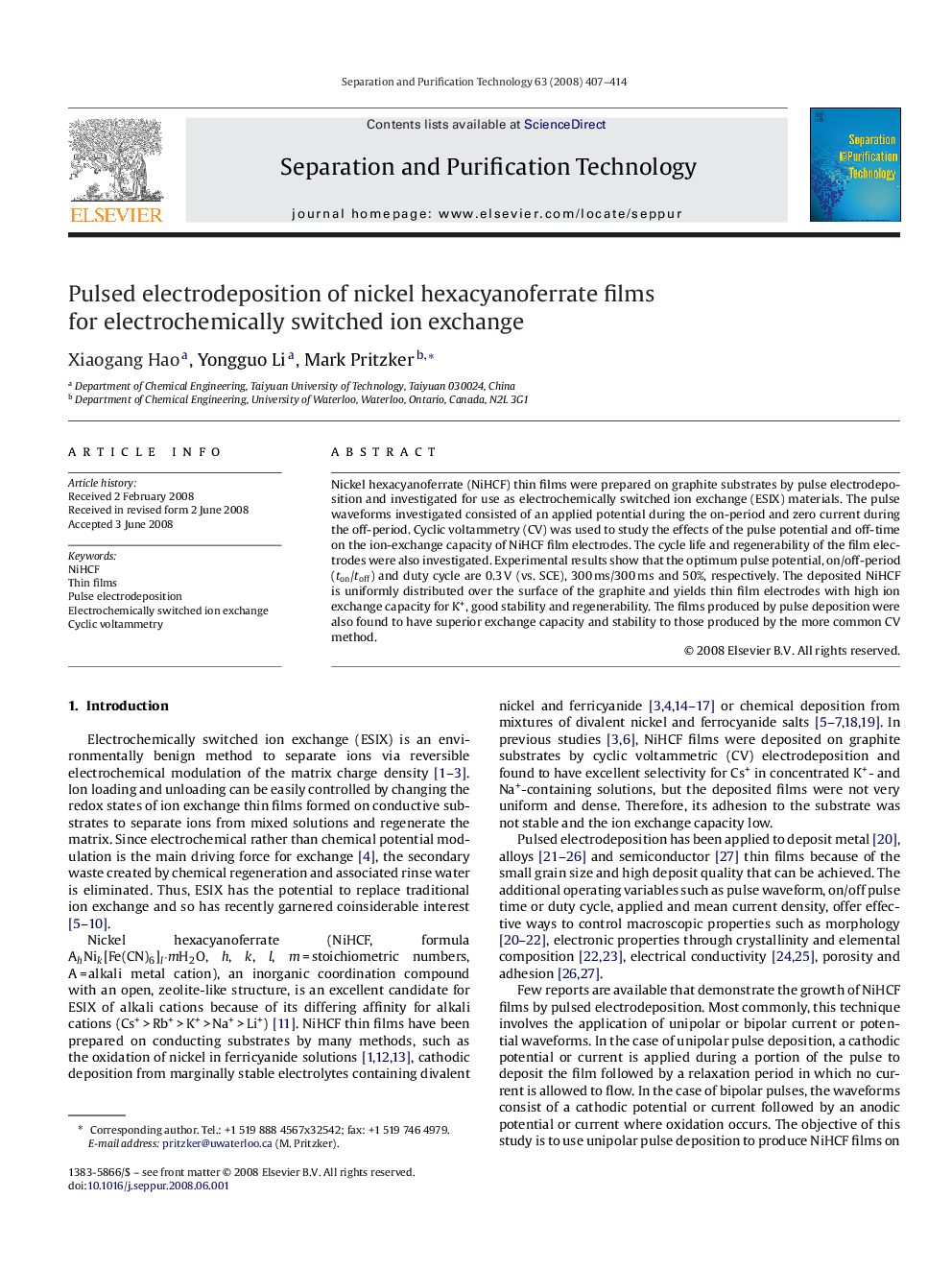| Article ID | Journal | Published Year | Pages | File Type |
|---|---|---|---|---|
| 643524 | Separation and Purification Technology | 2008 | 8 Pages |
Nickel hexacyanoferrate (NiHCF) thin films were prepared on graphite substrates by pulse electrodeposition and investigated for use as electrochemically switched ion exchange (ESIX) materials. The pulse waveforms investigated consisted of an applied potential during the on-period and zero current during the off-period. Cyclic voltammetry (CV) was used to study the effects of the pulse potential and off-time on the ion-exchange capacity of NiHCF film electrodes. The cycle life and regenerability of the film electrodes were also investigated. Experimental results show that the optimum pulse potential, on/off-period (ton/toff) and duty cycle are 0.3 V (vs. SCE), 300 ms/300 ms and 50%, respectively. The deposited NiHCF is uniformly distributed over the surface of the graphite and yields thin film electrodes with high ion exchange capacity for K+, good stability and regenerability. The films produced by pulse deposition were also found to have superior exchange capacity and stability to those produced by the more common CV method.
